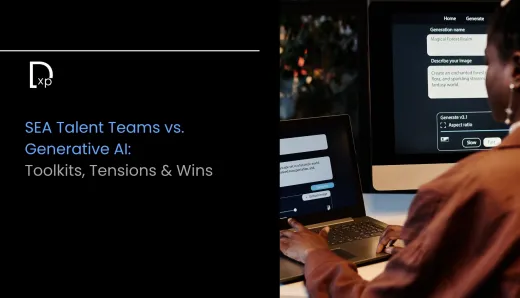Farming with Algorithms: AI’s Quiet Revolution in Agriculture

In the quiet fields where food begins its journey to our tables, a revolution is quietly taking root. It doesn’t come with loud machines or grand declarations. It comes with data, sensors, and algorithms. Artificial intelligence is transforming agriculture, not with headlines, but with results. And in doing so, it’s reshaping one of the world’s oldest industries for a future that looks increasingly uncertain.
For years, farming was guided by experience, intuition, and tradition. But the challenges of today, climate change, water scarcity, shrinking arable land, and rising global demand, require more than just inherited wisdom. They demand precision, foresight, and adaptability. This is where the future of AI begins to plow its way through agriculture.
From Soil to Software
Modern farming is becoming a high-tech enterprise. Drones scan fields from above, collecting real-time images of crops. Sensors embedded in the soil monitor moisture, nutrient levels, and temperature. Satellite data offers insights into weather patterns and pest risks. But data alone is not enough. This is where AI steps in, analyzing patterns, making predictions, and offering decisions that once relied solely on the farmer’s instinct.
Consider irrigation. Traditionally, farmers watered fields based on routine or visual inspection. Today, AI systems can analyze weather forecasts, soil data, and crop needs to determine exactly when and how much to irrigate. The result? Less water wasted, lower energy costs, and healthier plants.
Harvesting Intelligence
AI is also changing how and when farmers plant, fertilize, and harvest. Machine learning models can predict the best sowing times based on historical yield data and current weather conditions. They can optimize fertilizer use, reducing runoff and environmental harm. In harvesting, robots powered by AI are being trained to pick fruit at just the right moment, ripe, but not overripe. This is more than efficiency. It’s sustainability in practice.
India, with its vast agricultural landscape and diverse farming needs, is beginning to adopt these technologies. Startups are building AI tools that guide farmers on crop selection, pest control, and pricing forecasts. The promise is huge: better yields, reduced input costs, and a safety net for small farmers who are most vulnerable to climate shocks.
Fighting Pests and Climate
Pest control has always been a delicate balance, too little, and crops are lost; too much, and the land is poisoned. AI systems now monitor fields for early signs of infestation using images and environmental cues. They alert farmers in time, allowing for targeted intervention rather than blanket spraying. This precision farming approach minimizes chemical use and preserves soil health.
AI is also emerging as a vital ally in dealing with climate uncertainty. With changing rainfall patterns, temperature spikes, and erratic seasons, farming has never been riskier. AI models can simulate future climate scenarios and help farmers plan for drought-resistant crops or shifting planting windows. This proactive approach marks a major shift, from reacting to nature, to anticipating it.
Bridging the Knowledge Gap
Perhaps the most profound impact of AI in agriculture is its potential to bridge the knowledge gap. Not every farmer has access to an agricultural scientist or an agronomist. But with a smartphone and an AI-powered app, even a smallholder can receive tailored advice, weather alerts, and market updates. This is especially transformative in rural areas, where resources are limited and traditional extension services are overstretched.
Still, challenges remain. Many farmers lack the digital literacy to fully use these tools. Infrastructure gaps, especially in connectivity and electricity, also hinder widespread adoption. And then there’s the trust factor—can a farmer really believe that an app knows better than his or her lived experience?
The Ethics of Agricultural AI
The future of AI in agriculture must also reckon with equity. If only large corporations or wealthy farmers can afford the most advanced tools, the technology could deepen inequality in rural economies. That’s why open platforms, affordable pricing models, and policy support will be crucial in making AI a truly inclusive solution.
There’s also the question of data. Farms are becoming data-rich environments, but who owns that data? How is it protected? Who gets to profit from it? These are not just technical questions. They go to the heart of rural autonomy and sovereignty.
The Future of Food
As the global population heads toward 10 billion, the pressure on food systems will only increase. The answer will not come from more land or more chemicals. It will come from smarter systems. The future of AI is not confined to laboratories or urban centers. It is growing in fields, feeding livestock, and ripening fruits. It is making agriculture not just more efficient, but also more resilient.
This quiet revolution may not make headlines every day, but its impact will be felt in every meal. In the balance between nature and nourishment, AI is becoming the farmer’s newest, and perhaps most crucial, partner.




